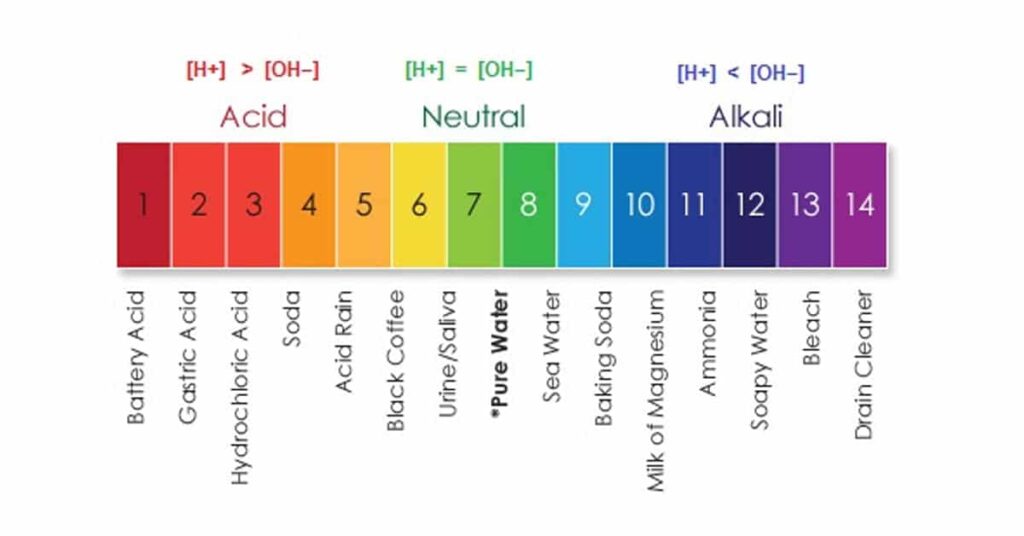Regarding the complex flavors of coffee, acidity plays a crucial role in creating a delightful and memorable taste experience.
But what exactly is the role of acidity in coffee taste?
This article explores the significance of acidity in coffee, how it impacts the overall flavor profile, and why understanding its role can help you appreciate your daily cup even more.
Get ready to discover the fascinating world of coffee acidity and unlock a new level of appreciation for your favorite beverage.
The Basics of Coffee Acidity
Acidity in coffee refers to the bright, tangy, and sometimes fruity flavors experienced when tasting a cup of coffee.
It is an essential component contributing to a well-balanced and enjoyable coffee experience. Understanding acidity is crucial for coffee enthusiasts and baristas, as it can significantly impact a coffee’s overall taste and quality.
Definition of Acidity in Coffee
In coffee, acidity does not refer to the same acidity found in lemons or vinegar. Instead, it is a perception of a certain level of tartness that adds complexity and liveliness to the flavor profile of coffee.
Acidity is a desirable characteristic in coffee, as it contributes to the brightness and complexity of the overall taste.
The Importance of Acidity in Coffee Taste
Acidity plays a vital role in determining the overall taste of coffee. It provides a pleasing, refreshing quality to the flavor profile and helps to balance out other elements, such as sweetness or bitterness.
Without acidity, coffee can taste dull, flat, and lacking in complexity. The acidity provides that zing and liveliness that makes a cup of coffee exceptional.
Types of Acids Found in Coffee
Several types of acids can be found in coffee, each contributing to the overall flavor profile in different ways.
The most common acids include citric acid, malic acid, phosphoric acid, and acetic acid. These acids can impart different flavors, such as citrusy, fruity, or wine-like notes, making each coffee blend or origin unique in its taste.
Factors Affecting the Acidity in Coffee
Coffee Bean Varieties
Different coffee bean varieties can have varying levels of acidity. For example, certain Arabica coffee varieties tend to have a higher acidity than Robusta beans. Arabica beans are often preferred for their complex and nuanced flavors.
Growing Conditions
The environment in which coffee plants are grown also significantly impacts the beans’ acidity. Factors such as altitude, temperature, rainfall, and soil composition can influence the development of acids in coffee cherries. Generally, higher altitude growing conditions produce beans with higher acidity levels.
Processing Methods
How coffee beans are processed after they are harvested can also affect their acidity. The “washed” and “natural” methods are the two primary processing methods.
Washed coffees, which involve removing the fruity pulp before drying the beans, tend to have a cleaner and brighter acidity. On the other hand, natural process coffees, where the beans are dried with the fruit intact, often have a more pronounced and fruity acidity.
How Acidity Affects Coffee Taste
Perceived Flavor Characteristics
Acidity in coffee can contribute to a wide range of flavor characteristics. It can impart citrus notes like lemon or orange and fruity flavors like berries or stone fruits.
In some cases, acidity can even resemble the tartness of wine. This complexity adds depth and interest to the taste, making it more enjoyable for coffee enthusiasts.
Balancing Acidity with Other Flavor Elements
While acidity is essential in coffee taste, it must be balanced with other components to create a harmonious flavor profile.
Too much acidity can result in a sour or unpleasant taste, while too little can make coffee taste dull. Achieving the right balance between acidity, sweetness, and bitterness is critical to creating a well-rounded and enjoyable cup of coffee.
Differentiating between Acidity and Bitterness
Chemical Differences
While acidity and bitterness are flavor components in coffee, they are caused by different chemical compounds. Organic acids primarily influence acidity, while bitterness results from various bitter compounds, such as caffeine or chlorogenic acid.
Understanding this difference can help identify and appreciate each taste sensation’s distinct characteristics.
Taste Perception Differences
Acidity and bitterness also differ in how our taste buds perceive them. Acidity is experienced mainly on the sides and the tip of the tongue, creating a bright and tangy sensation.
Bitterness, however, is detected towards the back of the tongue and can be more lingering. Recognizing the nuances between these two taste sensations can enhance our appreciation of the complexity of coffee flavor.
Acidity Levels in Different Coffee Regions
Latin American Coffees
Latin American coffee regions, such as Colombia, Costa Rica, and Guatemala, are known for producing coffee with bright and medium to high acidity. These coffees often have a clean, crisp, and citrusy profile, making them popular choices for those who appreciate a vibrant and lively coffee.
African Coffees
Coffees from African regions, such as Ethiopia, Kenya, and Rwanda, are renowned for their high acidity levels. These coffees often exhibit intense and complex fruity flavors, with acidity ranging from delicate and tea-like to mouth-puckeringly bright. African coffees are highly sought after by coffee connoisseurs who enjoy the vibrant and distinctive flavors they offer.
Asian Coffees
Asian coffee regions, such as Sumatra, India, and Yemen, tend to produce coffee with lower acidity levels. These coffees often have a fuller body and earthy flavor profile with less pronounced acidity.
While they may not possess the same brightness as Latin American or African coffees, they offer unique characteristics that appeal to those who prefer a milder and less tangy cup of coffee.
Popular Coffee Brewing Methods and Acidity
Pour Over
The acidity is typically more pronounced when brewing coffee using the pour-over method, such as with a Chemex or V60. The slow and precise pouring allows for better extraction of the acids present in the coffee, resulting in a brighter and crisper cup. This method is often favored by coffee enthusiasts who enjoy highlighting the acidity in their coffee.
French Press
With its longer extraction time and fuller-bodied brew, the French press method tends to produce a coffee with less perceived acidity. The metal filter used in a French press allows more oils and sediments to pass through, which can help mellow out the acidity. As a result, French press coffee often has a smoother and more rounded taste.
Espresso
Espresso is a brewing method that requires higher pressure and finer coffee grounds. While espresso can have a higher concentration of acids due to the quick extraction, its intense flavor and rich body can balance out the perceived acidity.
The acidity in espresso is often described as vibrant and bright, contributing to the complexity and depth of the resulting shot.
Managing Acidity in Coffee Preparation
Roasting Profiles
The roast level of coffee beans can significantly affect their acidity. Lighter roasts tend to preserve more of the natural acidity and brightness of the beans, resulting in a higher perceived acidity in the cup.
As the roast level gets darker, the acidity tends to mellow out, making way for deeper, darker flavors. Depending on the desired flavor profile, roasting profiles can be adjusted to enhance or subdue acidity.
Grind Size
The grind size of coffee beans also plays a role in managing acidity during the brewing process. Finer grinds tend to extract more acids, producing a brighter and more acidic brew. Coarser grinds, on the other hand, lead to a slower extraction and can result in a milder and less acidic cup. Adjusting the grind size allows for greater control over the perceived acidity in the final brew.
Water Temperature
The water temperature used for brewing can impact the acidity of coffee. Cooler water temperatures can produce more acidic and vibrant coffee, while hotter water temperatures can extract more bitter compounds and reduce perceived acidity.
Finding the proper water temperature is crucial for achieving the desired acidity level in the final cup of coffee.
Factors That Increase Acidity in Coffee
Under-ripened Coffee Cherries
Using under-ripened coffee cherries during harvesting can lead to higher acidity levels in the beans. These cherries contain more organic acids, creating a brighter and tangier flavor profile. While under-ripened cherries are generally avoided in coffee production, intentional use can create unique and lively flavor profiles.
Light Roasts
Light roasts are known for preserving the natural acidity of coffee beans. The acidity becomes more pronounced as the roast level gets lighter, resulting in a bright and zesty cup. Light roasts are preferred by those who enjoy the vibrant and complex flavors that acidity can bring to the forefront.
Higher Altitude Growing Conditions
Coffee beans grown at higher altitudes tend to develop higher levels of acidity.
The cooler temperatures and slower maturation process that come with higher elevations promote the creation of complex and bright flavors, including acidity. Coffees from high-altitude regions are often sought for their vibrant and dynamic taste profiles.
Factors That Decrease Acidity in Coffee
Dark Roasts
As coffee beans are roasted darker, the acidity tends to diminish. Dark roasts bring out rich and bold flavors while mellowing out the acidity. This can result in a smooth cup of coffee, low perceived acidity, and a fuller body. Those who enjoy a bolder and less tangy coffee experience often prefer dark roasts.
Blending with Low-acidity Coffees
Blending coffee beans with low-acidity varieties can help lower the overall perceived acidity in the final cup.
By combining different beans, roasters can create a more balanced flavor profile that appeals to a broader range of palates. Blending allows for fine-tuning acidity levels and achieving a desired taste profile.
Lower Altitude Growing Conditions
Coffee beans cultivated at lower altitudes generally have lower levels of acidity. The warmer temperatures and faster maturation process with lower elevations result in a mellower and less acidic taste.
Coffees from lower-altitude regions are favored by those who prefer a smoother, less tangy coffee cup.
Acidity and Coffee Brewing Styles
Lighter Roasts for Acidity Emphasis
If you prefer a brighter and livelier cup of coffee, opt for lighter roasts that highlight the natural acidity in the beans.
Brewing methods that enhance acidity, such as pour-over, are also well-suited for bringing out the zingy flavors. Lighter roasts with these brewing styles can create a vibrant and acidic coffee experience.
Darker Roasts for Balanced Profile
For those who enjoy a more balanced and mellow cup of coffee, darker roasts may be the preferred choice.
The darker roast level adds depth and richness to the flavor profile while toning down the acidity. Brewing methods like the French press, which tend to produce a fuller-bodied brew, can complement dark roast flavors and create a harmonious cup of coffee.
Decaffeinated Coffee and Acidity
Decaffeinated coffee can have slightly lower acidity compared to regular coffee. Decaffeination can contribute to reducing acidity, resulting in a smoother and less tangy taste profile. For individuals who prefer a gentler coffee experience, decaffeinated options can provide the desired flavor without the stimulating effects of caffeine.
In conclusion, acidity is a fundamental element in coffee taste that contributes to the overall flavor profile’s complexity, brightness, and balance. Understanding the factors that affect the acidity and the various brewing methods and roast levels allows coffee enthusiasts to have greater control over the final cup of coffee they enjoy.
Whether you prefer a vibrant and tangy coffee or a mellow and balanced brew, acidity significantly shapes your coffee experience. Next time you savor a cup of coffee, pay attention to its acidity and appreciate the unique flavors it brings to the table.









































